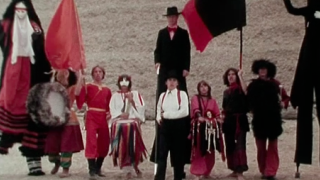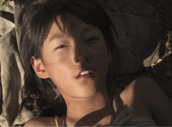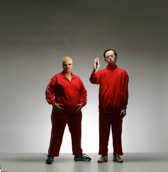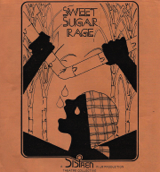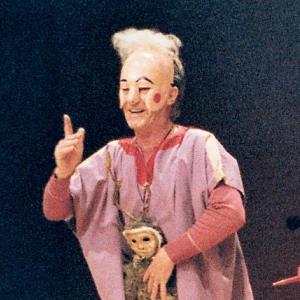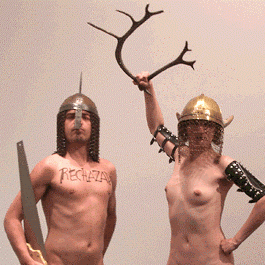Many theatre and performance traditions have involved parades and displays in public streets, towns or village squares, and the majority of these performances would have been constructed with this spatial context in mind. As such, pageants and parades, demonstrations and marches, also have theatrical elements, which borrow from street theatre. A number of early twentieth century western theatre practitioners saw the taking of theatre and performance to the streets and into public outside spaces as a political strategy, however, whereby theatre might be used to agitate and as a form of propaganda. Similarly, different political groups such as the Suffragettes saw the benefit of ‘performing’ their politics on the streets, intentionally disrupting the everyday rhythm of public space with a politically driven visual and theatricalised mass presence.
In the latter part of the twentieth century street theatre was often created as a means of re-claiming public space as a place for political and social discourse, through cultural interventions such as theatre. Street theatre practices often involve the use of larger than life puppets, banners, mobile stages and other means by which performance can be seen and shared above the everyday noise of urban life and through which social intervention might be maximized. Other performance which might be classed as street theatre might be less overt in its political intentions, such as performances taken through the streets in order to advertise theatre and performance taking place elsewhere, theatre made for street and public display as part of civic or community celebration, and theatrical sketches performed on the street as part of festivals or carnivals.
Image: Odin Teatret Archives. Huampani, Peru, 1988. Photo © Tony D’Urso

